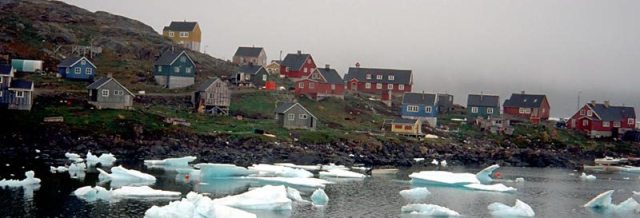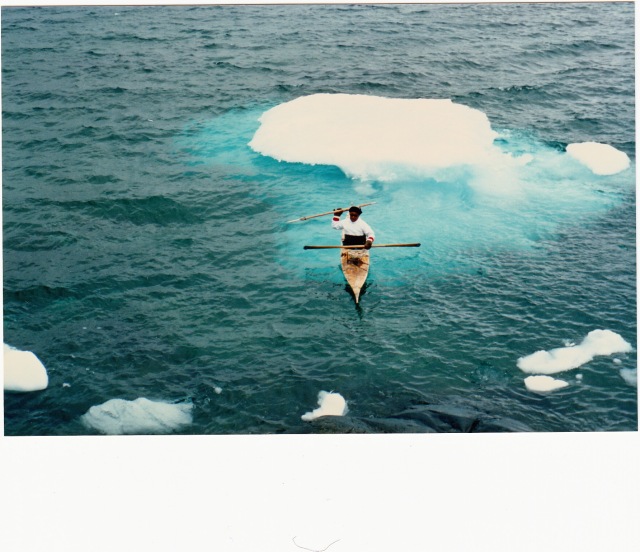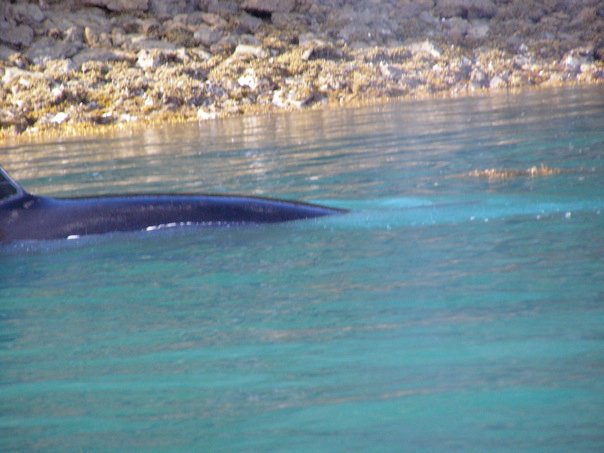







Whaling became Australia’s first export business in the 1800s, initially catching southern white and sperm whales. When these became scarce, humpbacks became the target. The hunt was initially conducted from small boats, resembling large row boats, putting both man and whale at equal risk of injury. Steam-driven boats and harpoons replaced the small boats and spears, putting the whale at a great disadvantage. When whaling ceased on the Eastern seaboard whale numbers had decreased with estimates claiming numbers had dropped to approximately 100 humpback whales remaining. Thankfully their numbers have increased by around 10% per year and now whale numbers are around 8,000.
The whaling station at Byron Bay opened in 1954 and closed in 1962. During its time in operation the slaughter of 1,146 whales occurred, collecting around 10,000 tons of oil.
In Kulusuk, Greenland the Inuit catch whales as a source of food. Small boats are still used although I have no doubt that harpoons are available. The only fishing I observed whilst I was visiting was in small kayaks using a spear. Arriving in the small town of Kulusuk it was fascinating to see a carcass of a whale in the town square (village centre). It was lying on a macintosh with only a small amount of meat left. It had apparently been caught three days before and the village had feasted on it for three nights and the remains would be now fed to the dogs.
In thePelorous Sound, on our way to NW Bay in a small, old wooden-hulled diesel-fuelled fishing boat, the Penguin, we saw water spouts close-by. The killer whale family were more inquisitive about us and swam under and around the boat, delighting us with their antics. They were so close that I could reach over the side of the boat and touch them (if I’d wanted to). We stayed an hour watching them before we continued on our journey, thankful that Australia, at least, no longer harvests these fantastic creatures.













Reblogged this on Reflections and Nightmares- Irene A Waters (writer and memoirist) and commented:
Throwback Thursday I return to the post that I made in August 2013 following the post of the six year old visiting the whaling station at Byron Bay. Here I look at a couple of other experiences of whales and also a brief history of the whaling station of my youth. For a real feel of whale hunting in the Southern Waters I would highly recommend Chasing the Light by Jessie Blackadder. About three women who are the first to travel to Antarctica in the 1930’s. Her descriptions of the landscape are superb and the factory ships for the whales are described so well you truly believe that you are there.
LikeLike
How sad that is. I’m so happy that they no longer do this there.
LikeLiked by 1 person
So am I. It was very gory. I much prefer the later whales in New Zealand which are well and truly alive and magnificent.
LikeLiked by 1 person
Great photos and info. And it is wonderful to see whales alive and swimming freely. 😀
LikeLike
It is indeed. We felt really priviledged to be that close to them and watch them playing.
LikeLiked by 1 person
I have such a hard time seeing these magnificent, intelligent creatures killed. I know that whaling is very limited in some areas now, but Japan and some European countries still do too much whaling. We are going to lose them, I fear.
LikeLike
Hopefully pressure from these country’s populations will stop them from the mass whaling. At least the numbers in the Southern Oceans are increasing so we hopefully won’t lose them soon thanks to the efforts of the Sea Shepherd and the Australian people.

LikeLike
Fascinating account of Australia’s whaling history this Irene. I am so glad that whales are no longer harvested there, they are too magnificent and it breaks my heart when I hear what goes on in Japan. We used to see humpback whales from the shore in California as they came down the along the Baja Peninsula but I never got to touch one, sadly. Still, never say never! A wonderful read this, and I still think how profound it was for you to visit a whaling station when you were only six. That is quite something…
LikeLike
Yes I feel guilty putting up these pictures from when I was small but in those days we didn’t seem to have the understanding of the wonder of these creatures and their vast intelligence. I’m glad we no longer do it and hope the Japanese people will put pressure on their government to stop. I like the later photos in New Zealand and Greenland. At least in Greenland the whale has a chance and it is not farmed on a huge scale.
LikeLiked by 1 person
Interesting post. I’m glad you are doing these throwbacks on Thursdays. My daughter spent time on Baffin Island and ate nuktuk (whale blubber). It’s interesting to note that greens are not a part of the Inuit diet, but the krill that whales and seals digest goes into their fat lining and offers the same nutrients as kale or broccoli when eaten. Beautiful photos, too, even the ones of whaling. History is not something to erase but to understand and connect to our progress of humanity.
LikeLike
Charli I did know that the Inuit didn’t eat greens – they would be hard pressed to find any I would imagine – but I didn’t know the blubber provided them with those nutrients. It is such a fine tuned eco system that we started with – everything there in its place for a purpose. What did your daughter say the blubber tasted like?
You are quite right. History shouldn’t be hidden but we should look at it and learn and perhaps not repeat the mistakes. Also to acknowledge that times are different and values were often different. You’ve said it perfectly connect to our progress of humanity.
LikeLike